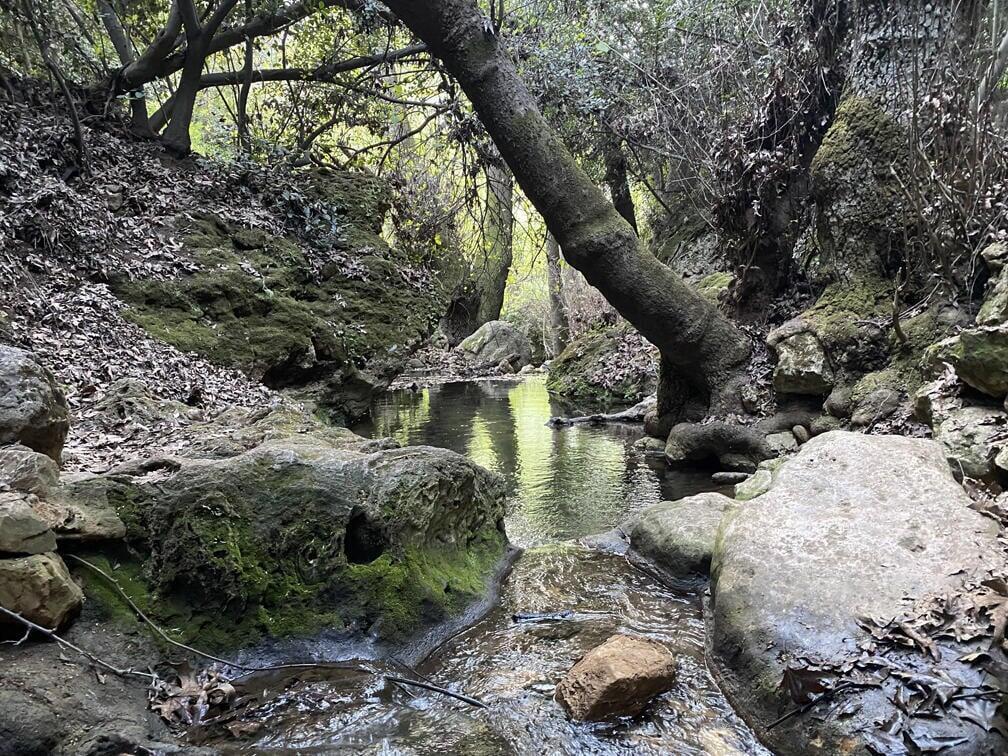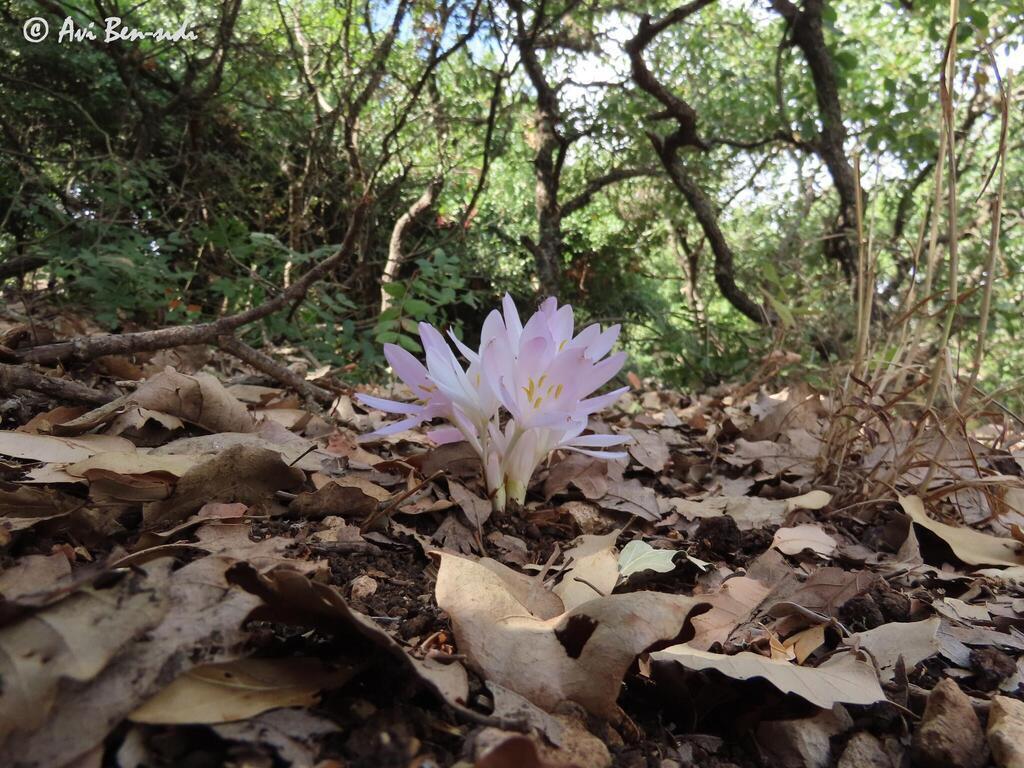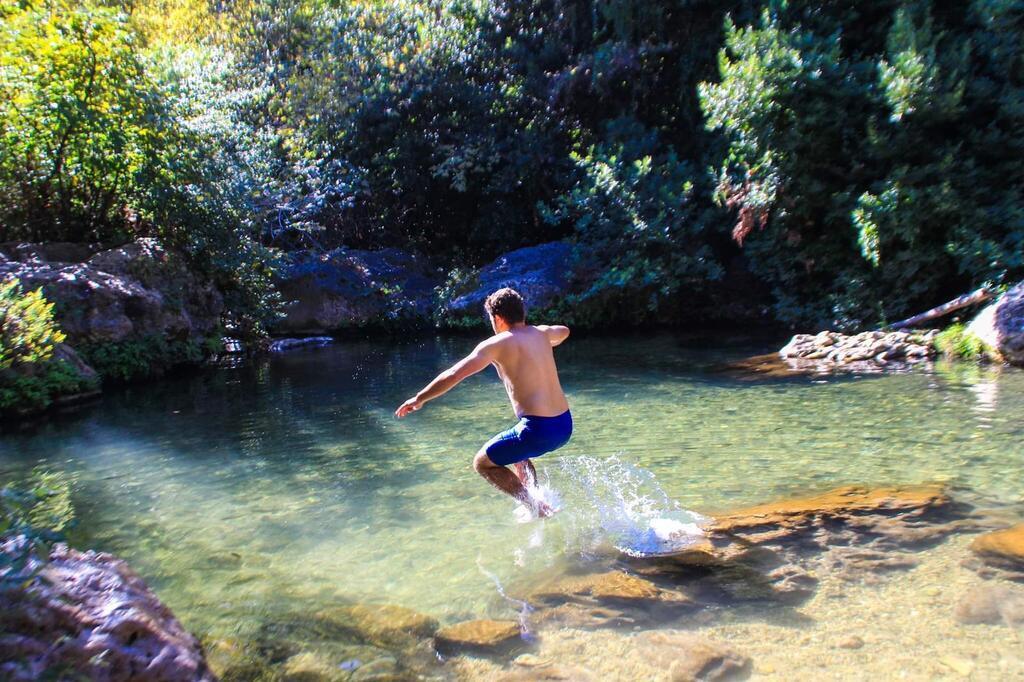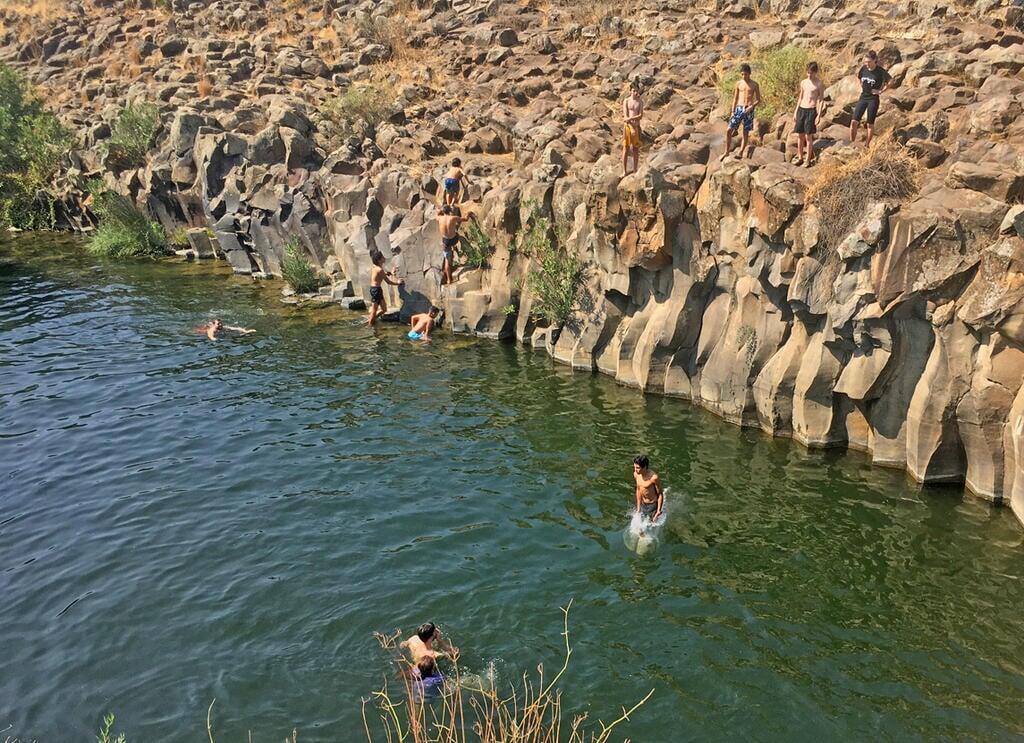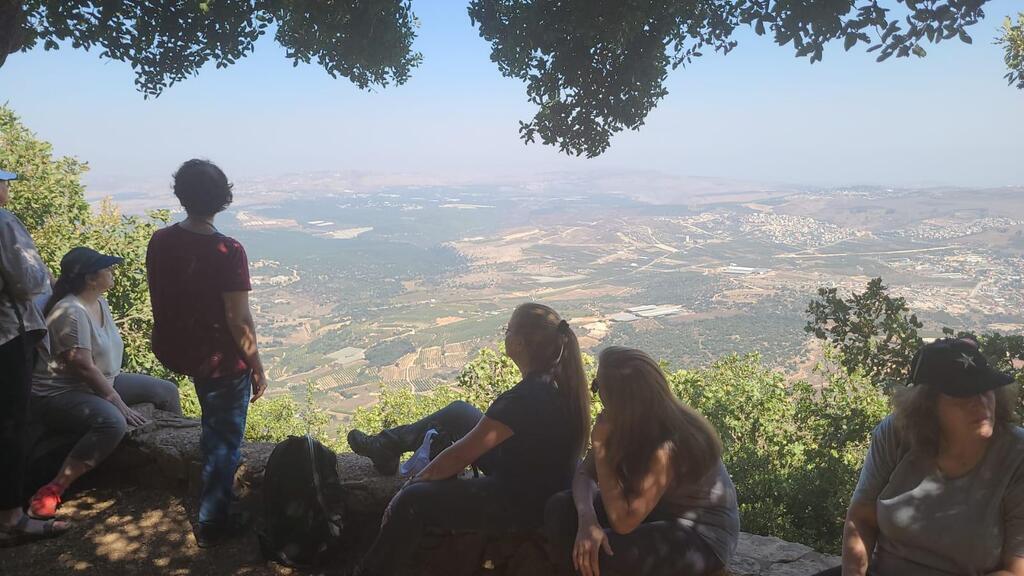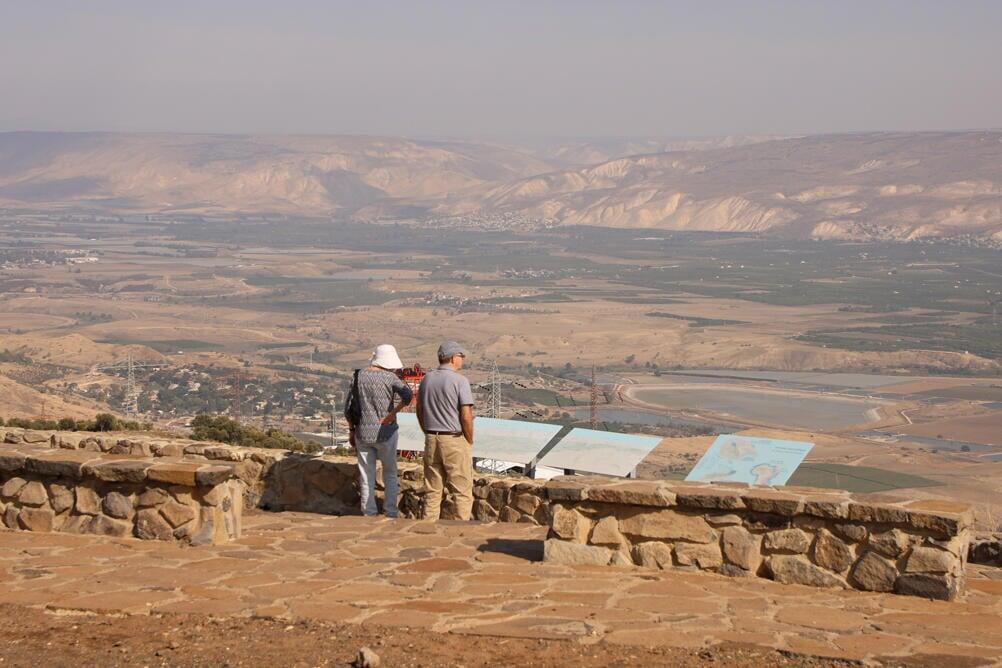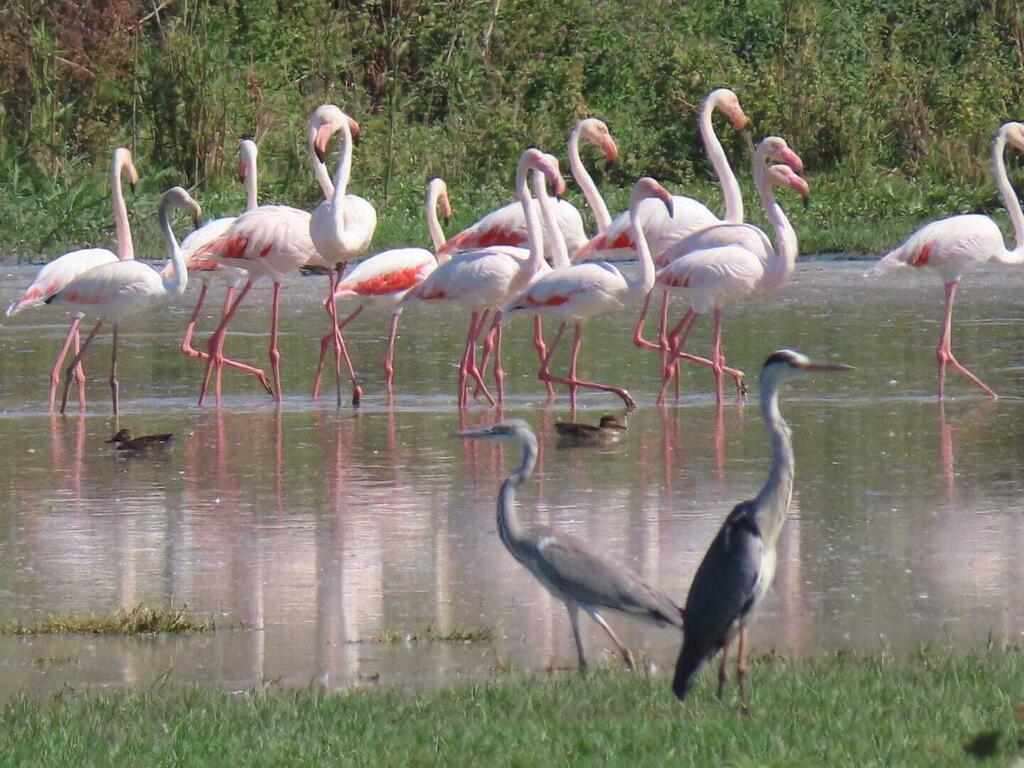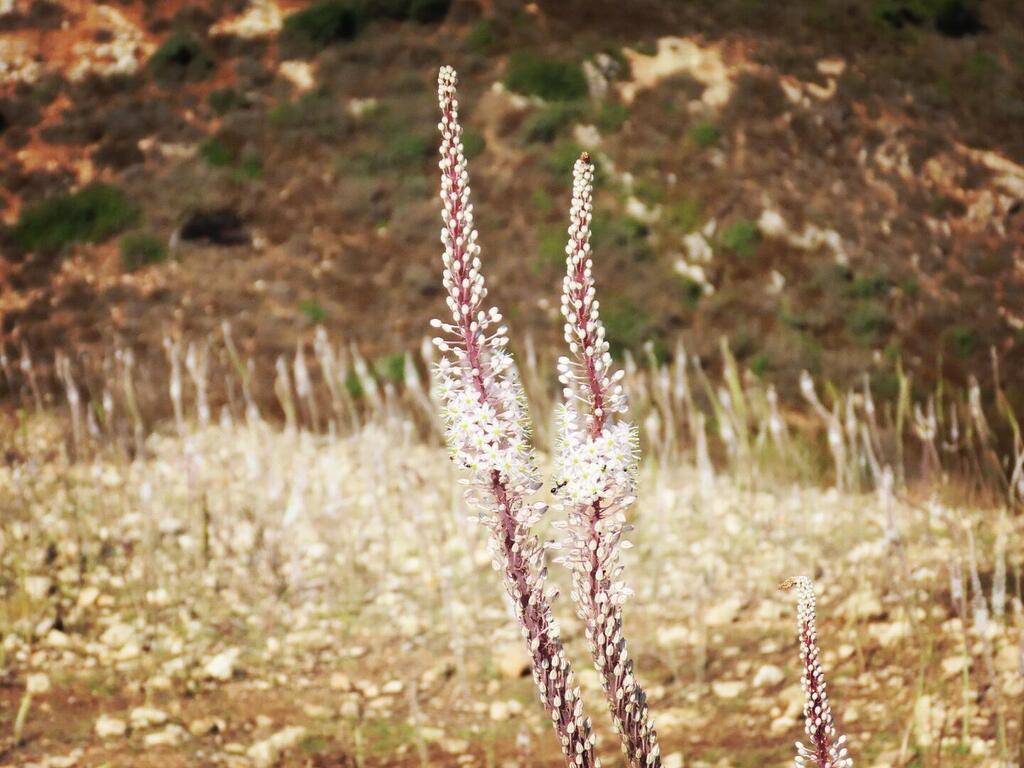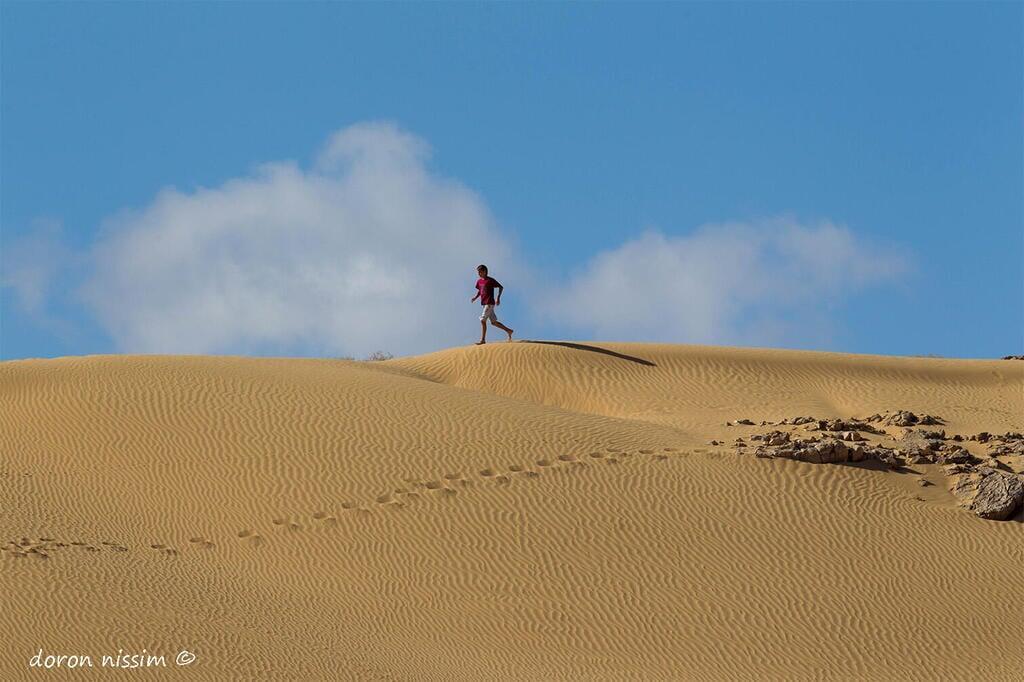Getting your Trinity Audio player ready...
Rock pools and a shaded grove in Nahal Amud
Originating from the Upper Galilee and ending in the Sea of Galilee, Nahal Amud stands as Israel's highest perennial stream. Its upper stretch meanders through slopes adorned with oak, terebinth, laurel, willow and plane trees, offering a family-friendly hike starting near Nahal Meron, one of its main tributaries.
Read more:
The journey begins with a panoramic view from Mount Meron's summit, leading to the Ein A-Tina police station—established during the Arab Revolt of 1936-1939 to safeguard the Ein Yakim spring's pumping station. The path unfolds, revealing an age-old orchard that exemplifies the traditional mountain farming once widespread in Nahal Amud.
At the edge of the orchard, facing the stunning vistas of the reserve, the trail gently descends into Nahal Amud's channel, leading to an ancient stone quarry. Venturing from the quarry, visitors follow the blue-marked trail to the pristine sky-blue pools, nestled under the shade of towering plane and fig trees. It's a tranquil oasis, perfect for cooling off before retracing steps to the trailhead.
Please note that entrance to the reserve has a fee (28 shekels for adults, 14 shekels for children) and pre-registration on the Nature and Parks Authority website is required.
Tel Yodfat's sea of crocus
While crocus herald the approach of autumn, they actually begin their bloom in summer, with their peak during the Tishrei holidays. Tel Yodfat in the Lower Galilee offers not only a picturesque backdrop for these blooms but also stands as one of Israel's most captivating archaeological sites. As autumn nears, the hillside is painted white with countless crocus.
Historically significant, Tel Yodfat was once a biblical city. During the Second Temple period, it became a pivotal Jewish settlement. However, the city's resilience was tested during the Great Revolt of 67 CE, enduring a 47-day Roman siege before its tragic fall, leading to its devastation and the massacre of its residents
Beyond its archaeological wonders, the panoramic beauty around Tel Yodfat is further accentuated by crocus blanketing the hill in white by summer's end. To get there, drive toward Moshav Yodfat. Shortly after the entrance, take a left and proceed for about half a mile to the national park's parking. A brief circular trail awaits, with an extended route for the adventurous of you leading to the Har Atzmon viewpoint, requiring a car shuttle to Sheikh Abu Al-Hija's tomb. Entry is complimentary, without prior booking.
Nahal Kziv: From springs to cascades
Ein Ziv, atop Nahal Kziv in Western Galilee, stands as the region's largest spring. While it served as a drinking water source from the 1950s, an environmental movement curtailed its extraction by 2006. Today, waters diverted from a pumping station cascade into the stream, crafting a mesmerizing waterfall.
Previously accessible by car, the route to Ein Ziv spring has since been restricted for conservation, requiring a trek of more than a mile on foot. While the waterfall at Ein Ziv is a charm in itself, it's worthwhile to trail the verdant path leading to Ein Tamir spring, just a mile and a half away. This walk, shaded by the majestic Eastern Plane trees reaching heights of 20 meters, offers a tranquil experience.
Historically, the route housed eight flour mills, with some ruins still visible. As you journey between the springs, you'll encounter pristine pools, often dubbed "Eden Pools". Dip your feet, and the Garra Rufa fish, abundant in these waters, will offer a natural pedicure. Admission is both free and without the need for prior booking.
The allure of Zavitan Stream: From basalt pools to waterfalls
Nestled in the Golan Heights, Zavitan Stream showcases nature's marvel with its deep crystalline pools surrounded by striking basalt cliffs. These formations bear witness to ancient lava flows from the Golan's volcanic mountains. After a refreshing dip, hikers can proceed to a vantage point offering a view of the Zavitan waterfall. Adventurous souls might take the challenging descent to the waterfall's base, where two expansive pools await. This round trip culminates in a 45-minute return journey.
Situated within the expansive Yehudiya Forest Reserve, Zavitan is but one gem among many. The reserve offers varied trails, from the demanding paths of Nahal Yehudiya and Hazaki to the more leisurely routes leading to Nahal Daliyot's flow and the iconic Meshushim Pool.
Entrance to the reserve requires a fee (22 shekels for adults, 9 shekels for children) and advance registration on the Nature and Parks Authority website.
Mount Meron's blossoming summit: A crocus encounter
The scenic "Peak Trail" encircles Mount Meron's crest, rising to nearly 4,000 feet. At this time, the summit is adorned with the early blooms of crocus. Strollers can admire the prominent crocus, boasting bright white or pink petals, distinguished as an early bloomer among its kind.
Strategically placed viewpoints offer panoramic sights of the Upper Galilee mountains, Lebanon, the Golan Heights, Mount Hermon, the coastal plains, and segments of the Lower Galilee. This easily navigated red-marked trail spans about a mile. To embark on this experience, diverge from Highway 89 between Hurfeish and Sasa, directing toward the Mount Meron Field School. The journey begins from the summit's parking space. Entry is complimentary, with no reservation required.
Jordan Star: Where history meets nature's grandeur
Nestled in the Jordan Star National Park lies an almost perfectly preserved grand Crusader fortress, a unique relic in Israel. Perched atop the Lower Galilee, it boasts panoramic views of the Jordan Valley and Gilead, aptly named "Belvoir" by its Crusader architects, translating to "beautiful view."
Strategically positioned along the avian migration corridor between Europe and Africa, the fortress provides a front-row seat to the captivating sight of birds embarking on their migratory journey. Beyond its historical allure, the park features picturesque walking trails, a sculpture garden crafted by artist Yigal Tumarkin, and a haven for rare flora.
Visitors are required to pay an entrance fee (22 shekels for adults, 9 shekels for children) and register in advance through the Nature and Parks Authority website.
Pelicans and Flamingos at the Lake Hula
The Hula Valley is undoubtedly one of the best places to observe a variety of migrating birds. Migration season is just beginning but the past few weeks have already seen the arrival of dozens of pink flamingos who come from their nesting sites in Turkey and Iran, on their way to Africa. Until recently sightings of flamingos were a rarity but in recent years, they have come in growing numbers. Pelicans have now joined them. They too are migrating to Africa.
Cranes will arrive in the coming weeks and tens of thousands will congregate in Israel and remain through winter, until March.
The Hula Lake is a tourist attraction in the north that is visited by many other predatory birds such as the eastern imperial eagles and the rare greater spotted eagles. The white-tailed eagles and the black-winged kites as well as types of waterfowl.
The lake was formed by controlled flooding of wetlands that were uncovered when the area was dried to create agricultural land, in the 1950s. In 2009, the lake was named one of the ten best places for animal watching in the world, by BBC Wildlife. Visitors can hire bicycles or club cars to tour the area or join carriage tours that reach right up to where the birds rest.
The Hula Reserve lies to the south. Established in 1964, it was Israel's first nature reserve. It too is on a bird migrating path that is world-important for waterfowl as well as for jungle cats, otters, nutria and herds of water buffalo.
A three-story tower on the reserve's walking trail provides an observation point for bird watchers. There is also a 600-meter (nearly 2,000-foot) long floating bridge with vantage points to see hidden birds on the lake.
Tickets to the reserve and lake cost NIS35 for adults and NIS 21 for children for each site. Booking in advance is required at the KKL site for the lake and the Nature and Parks Authority site for the reserve.
Pancratium sickenbergeri in the sands of the ancient Nabatian settlement of Mamshit
Visitors to the ancient Nabatean city would be wise to take the time to wonder around before entering the national park and see the beauty of the Pancratium sickenbergeri, if full bloom this time of year, and enjoy the perfume of this white flower that grows in the desert sand and is unique to Israel.
Avner Rinot, a surveyor of the Society for the Protection of Nature in Israel says visitors will also be able to see the scilla hanburyi on their walk. The plant has delicate flowers that open in the late morning hours.
Entrance is free and does not require booking
The Avdat sand dunes
Magnificent sand dunes are located on the southern tip of the Avdat rift, are especially soft and made of sand from limestone unlike the coastal dunes that come from granite rock
Because of the extreme heat, visitors are urged to arrive early in the morning and enjoy the spectacular sunrise reminiscent of the Sahara Desert or Dubia. There is a 2-kilometer (1.2 mile) trail to arrive at the inviting dunes shaped like the waves.
Write Kasuy Dunes in your navigation app. It will bring you from the north on Route 40. Take a right at the Neot Semadar junction to Route 12 and then take a left towards Shaharut. There you will find a dirt road leading to the dunes.
Entrance is free and no booking is required.


